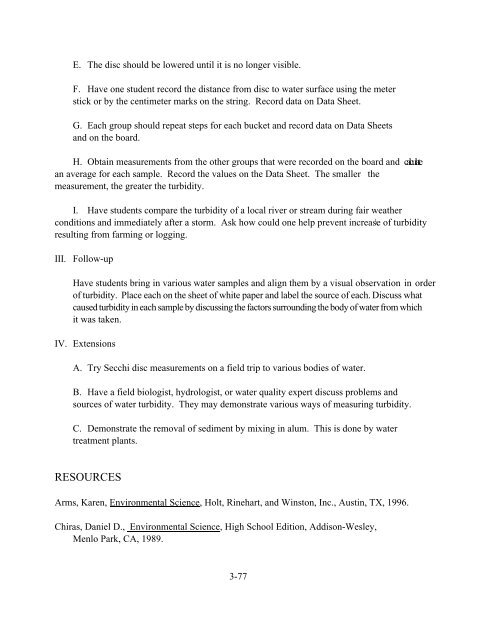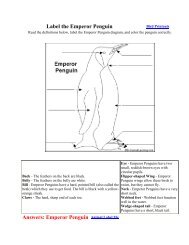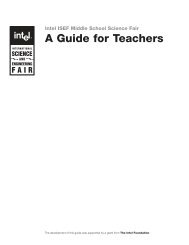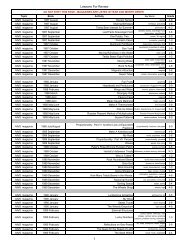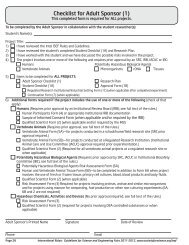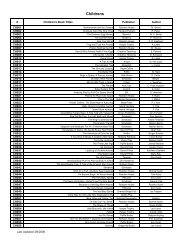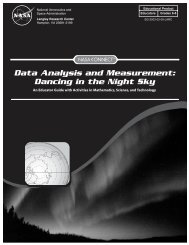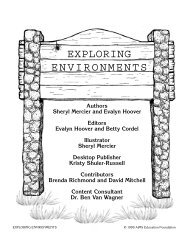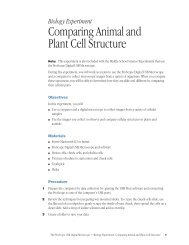BIOGRAPHY OF A RIVER
BIOGRAPHY OF A RIVER
BIOGRAPHY OF A RIVER
Create successful ePaper yourself
Turn your PDF publications into a flip-book with our unique Google optimized e-Paper software.
E. The disc should be lowered until it is no longer visible.F. Have one student record the distance from disc to water surface using the meterstick or by the centimeter marks on the string. Record data on Data Sheet.G. Each group should repeat steps for each bucket and record data on Data Sheetsand on the board.H. Obtain measurements from the other groups that were recorded on the board and calculatean average for each sample. Record the values on the Data Sheet. The smaller themeasurement, the greater the turbidity.I. Have students compare the turbidity of a local river or stream during fair weatherconditions and immediately after a storm. Ask how could one help prevent increase \ of turbidityresulting from farming or logging.III. Follow-upHave students bring in various water samples and align them by a visual observation in orderof turbidity. Place each on the sheet of white paper and label the source of each. Discuss whatcaused turbidity in each sample by discussing the factors surrounding the body of water from whichit was taken.IV. ExtensionsA. Try Secchi disc measurements on a field trip to various bodies of water.B. Have a field biologist, hydrologist, or water quality expert discuss problems andsources of water turbidity. They may demonstrate various ways of measuring turbidity.C. Demonstrate the removal of sediment by mixing in alum. This is done by watertreatment plants.RESOURCESArms, Karen, Environmental Science, Holt, Rinehart, and Winston, Inc., Austin, TX, 1996.Chiras, Daniel D., Environmental Science, High School Edition, Addison-Wesley,Menlo Park, CA, 1989.3-77


